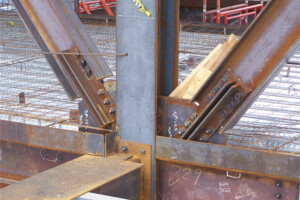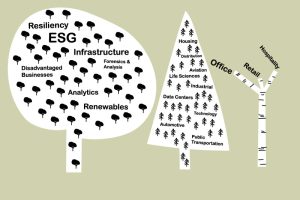Technology is the driving force behind innovation in today’s evolving architecture, engineering, and construction industry, and securing top talent is crucial in the talent drought. To stay ahead in this competitive market, engineering firms must explore innovative approaches to talent acquisition and retention, like cultivating strong employer brands that resonate with prospective candidates and investing in professional development to meet industry demands.
…Review Category : Business Practices
Strategies for successful delegated design in structural steel.
…What does legal advice about contracts have in common with cockroaches and Twinkies?
…The built environment is a powerful tool for improving people’s lives, sense of well-being, and overall health. As such, good design is an important tool in the fight for equity across populations. Unfortunately, design services are often a luxury, inaccessible to those who might benefit most from them. However, architects and engineers are not able to operate without resources. To explore these topics, ARCHIVE Global and Silman’s Building Equity Initiative teamed up to host a conversation amongst New York City practitioners to evaluate barriers and best practices when addressing pro-bono and low-bono design work. Below is a documentation of the shared challenges, strategies, and opportunities voiced by architects and engineers in attendance, focusing particularly on the structural engineering perspective.
…Maximizing value for your firm requires careful planning, expert advisors and a complete understanding of all potential obstacles.
…Have you heard the story of how Thomas Edison screened potential new research assistants? Legend has it that he would invite applicants out for a meal and order soup for the table. As the story goes, he did this to see how the applicants approached the situation. Did they make assumptions about the blandness and season the soup before tasting it, or did they allow themselves to taste it first and decide afterward if seasoning was necessary? Edison’s purpose was to weed out those who seasoned before tasting, reasoning that those who relied on assumptions would not produce the kind of open-minded Scientists and Engineers he needed in his laboratory. The lesson from this tale is to think about how best to evaluate a candidate for a potential position on your team.
…As design-build continues to gain increasing use as a project delivery method, structural engineers should be aware of the added risk lurking in the design-build contract. Disproportionate risk allocation and an elevated standard of care are two primary culprits in expanding the engineer’s risk exposure. Much of this risk can be managed with fair and carefully worded contracts that cover the design-build project and any design services performed prior to contract award. Close attention to the provisions of the design-builder’s contract with the owner that flow down to the engineer’s contract is also essential in confining the engineer’s risk to a reasonable level.
…Creating a culture of accountability, like most human conundrums in leadership, often makes the most expert and senior leaders want to throw up their hands in frustration and give up. “Why don’t they just do what I told them to do?” “But it’s clearly written in their role description?” “Why am I asking this same question three months later?” And narrowing down a definition of accountability can be difficult, depending on who is part of the conversation. So, for this article, let’s define accountability as a shared understanding that people are responsible for executing their commitments.
…Engineering companies nationwide face labor constraints for experienced professionals to deliver work, continued supply chain disruptions, and construction labor and materials shortages caused by the Covid-19 pandemic. Moreover, economic conditions grow more challenging with elevated inflation, higher interest rates, and concerns that the U.S. economy is on the brink of a recession. Yet the top 10 publicly traded A/E/C companies are experiencing increased revenue through organic growth and expect more growth in 2023, although some do maintain their caution for the year ahead. Their strategies provide insights for companies of all sizes.
…In consulting engineering practice, structural engineers face new ethical issues from time to time. One such occurrence happened recently when our firm was asked to take over a project started by another engineer. Unfortunately, taking over a project started by another engineer has legal and ethical implications, and my research found little written material on the subject.
…








